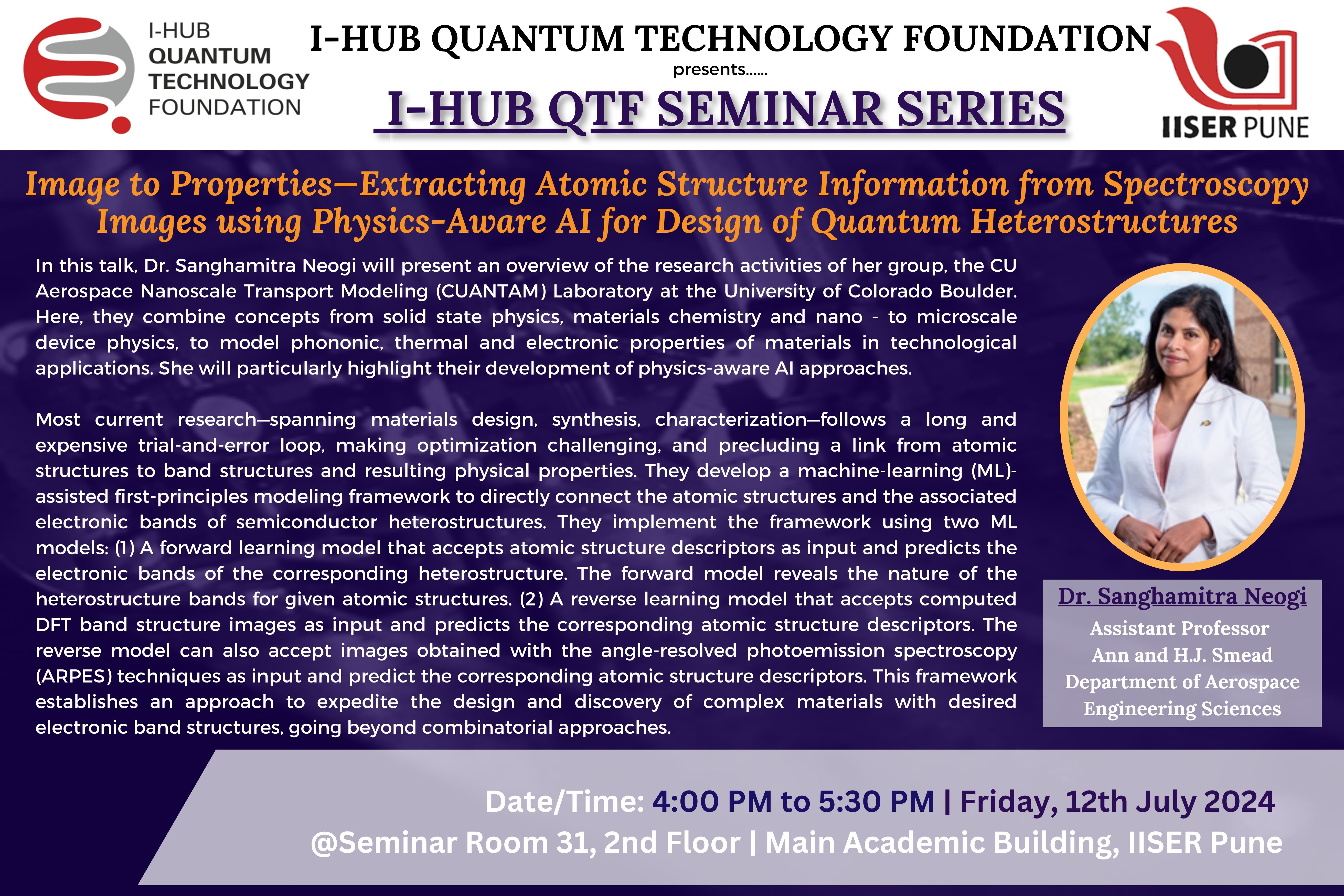
Venue
Speakers
Abstract
I-HUB QUANTUM TECHNOLOGY FOUNDATION
presents......
I-HUB QTF Quantum Seminar
Image to Properties—Extracting Atomic Structure Information from Spectroscopy Images using Physics-Aware AI for Design of Quantum Heterostructures
Date/Time: 4:00 PM to 5:30 PM | Friday, 12th July 2024
In this talk, Dr. Sanghamitra Neogi will present an overview of the research activities of her group, the CU Aerospace Nanoscale Transport Modeling (CUANTAM) Laboratory at the University of Colorado Boulder. Here, they combine concepts from solid state physics, materials chemistry and nano - to microscale device physics, to model phononic, thermal and electronic properties of materials in technological applications. She will particularly highlight their development of physics-aware AI approaches.
Most current research—spanning materials design, synthesis, characterization—follows a long and expensive trial-and-error loop, making optimization challenging, and precluding a link from atomic structures to band structures and resulting physical properties. They develop a machine-learning (ML)-assisted first-principles modeling framework to directly connect the atomic structures and the associated electronic bands of semiconductor heterostructures. They implement the framework using two ML models: (1) A forward learning model that accepts atomic structure descriptors as input and predicts the electronic bands of the corresponding heterostructure. The forward model reveals the nature of the heterostructure bands for given atomic structures. (2) A reverse learning model that accepts computed DFT band structure images as input and predicts the corresponding atomic structure descriptors. The reverse model can also accept images obtained with the angle-resolved photoemission spectroscopy (ARPES) techniques as input and predict the corresponding atomic structure descriptors. This framework establishes an approach to expedite the design and discovery of complex materials with desired electronic band structures, going beyond combinatorial approaches.